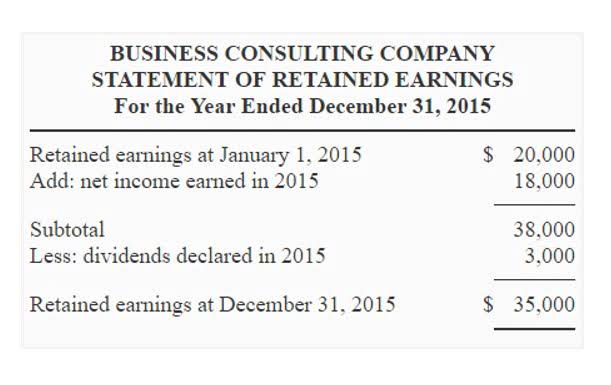
These are expensed in the period incurred, affecting profitability within that timeframe. Selling expenses, a key category, include costs related to product promotion and sales, such as advertising, sales commissions, and distribution. For instance, a company investing in digital marketing campaigns will see these reflected in selling expenses. The cost of production is an essential component of basic business accounting.

Decision-making power of period costs
Period costs appear in the income statement as operating expenses, including selling, general, and administrative (SG&A) expenses. These are deducted from gross profit to calculate operating income, a critical metric for evaluating a company’s cost structure. High fixed period costs can cause significant fluctuations in net income with changes in sales volume, underscoring the importance of cost management. The cost of labor is unique in that it can be both a product and period cost. This depends on whether the labor is directly related to production or not – a factory worker’s wages would be product costs, while a company secretary’s wages would be period costs.

Accounting treatment
- They occur consistently over a specific time period, like a month or a year, and are incurred regardless of how much or how little the business produces during that time.
- Interest expenses, marketing, and corporate sales costs are also included in this category.
- In a nutshell, we can say that all the costs which are not product costs are period costs.
- When the product is manufactured and then sold a corresponding amount from the inventory account will be moved to the income statement.
- Period costs are hard to pinpoint to the business’s main products, but they are incurred nonetheless because they’re essential.
- Product cost comprises of direct materials, direct labour and direct overheads.
- Period cost (often referred to as period expense) is any other cost that is incurred by the entity that does not directly relate to the entity’s manufacturing process.
As a general rule, costs are recognized as expenses on the income statement in the period that the benefit was derived from the cost. So if you pay contribution margin for two years of liability insurance, it wouldn’t be good to claim all of that expense in the period the bill was paid. Since the expense covers a two year period, it should be recognized over both years.
Example of Period Costs
Product costs are the expenses directly tied to the creation of goods or services within a business. These costs represent the financial resources invested in the production process. Administrative expenses cover general operational costs, such as executive salaries, office supplies, and utilities for non-manufacturing facilities.
- Otherwise, costs that can’t be traced or allocated to products and services are classified as period costs or costs that are attributed to the period in which they were incurred.
- These terms play a part in determining the cost of goods sold (COGS) and overall profitability.
- It is important to understand through the accrual method of accounting, that expenses and income should be recognized when incurred, not necessarily when they are paid or cash received.
- These costs are not included as part of the cost of either purchased or manufactured goods, but are recorded as expenses on the income statement in the period they are incurred.
- This article looks at meaning of and main differences between the two such cost bifurcations – product cost and period cost.
The costs that are not classified as product costs are known as period costs. These costs are not part of the manufacturing process and are, therefore, treated as expense for the period in which they arise. Period costs are not attached to products and the company does not need to wait for the sale of its products to recognize them as expense on income statement. According to generally accepted accounting principles (GAAPs), all selling and administrative costs are treated as period costs. Period costs include any costs not related to the manufacture or acquisition of your product. Sales commissions, administrative costs, advertising and rent of office space are all period costs.
When the product is sold, these costs are transferred from inventory account to cost of goods sold account and appear as such on the income statement of the relevant period. For example, John & Muller company manufactures 500 units of product X in year 2022. Out of these 500 units manufactured, the company sells only 300 units during the year 2022 and 200 unsold units remain in ending inventory. The direct materials, direct labor and manufacturing overhead costs incurred to manufacture these 500 units would be initially recorded as inventory (i.e., an asset). The cost of 300 units would be transferred to cost of goods sold during the year 2022 which would appear on the income statement of 2022.
📆 Date: May 3-4, 2025🕛 Time: 8:30-11:30 AM EST📍 Venue: OnlineInstructor: Dheeraj Vaidya, CFA, FRM
- To continue our bakery example, let’s say we’re hiring an external bookkeeper to do the books.
- Product and period costs take part in the financial story, influencing the bottom line and revealing the business’s financial health.
- Under different costing system, product cost is also different, as in absorption costing both fixed cost and variable cost are considered as Product Cost.
- Examples of period costs include rent and utilities of admin offices, finance charges, marketing and advertising, commissions, and bookkeeping fees.
- When looking at typical costs, you’ll often see these separated into product vs. period cost.
Period costs are essential to business operations but don’t directly affect the final products. To continue our bakery example, let’s say we’re hiring an external bookkeeper to do the books. Both types of costs are an important component of your business’s financial statements, so it’s helpful to set up a real-time reporting system using accounting software. GoCardless blends seamlessly with numerous accounting partners, including Xero. This ensures a joined-up workflow to help you track all costs of production while taking payments for goods and services at the same time. A business can go through periods where it doesn’t have any product period costs costs, but there will still be period costs as these are unrelated to the ebb and flow of production.
Period costs:

Imagine your favorite bakery – https://www.bookstime.com/bookkeeping-services/minneapolis the cost of flour, sugar, and the baker’s time to make those croissants you’re so fond of. Eric Gerard Ruiz, a licensed CPA in the Philippines, specializes in financial accounting and reporting (IFRS), managerial accounting, and cost accounting. He has tested and review accounting software like QuickBooks and Xero, along with other small business tools. Eric also creates free accounting resources, including manuals, spreadsheet trackers, and templates, to support small business owners. Direct labor includes wages and salaries for employees directly involved in production, such as machinery operators or assembly workers. Labor union agreements and overtime regulations, like those under the Fair Labor Standards Act (FLSA) in the United States, can impact these costs.

Instead, they’re related to the passing of time and any time-based expenses like utility bills and rent. In accounting, product costs are usually measured as part of the inventory. They’re often broken down into subcategories of fixed and variable costs, which can be used for calculating things like the break-even point.

Leave a Reply